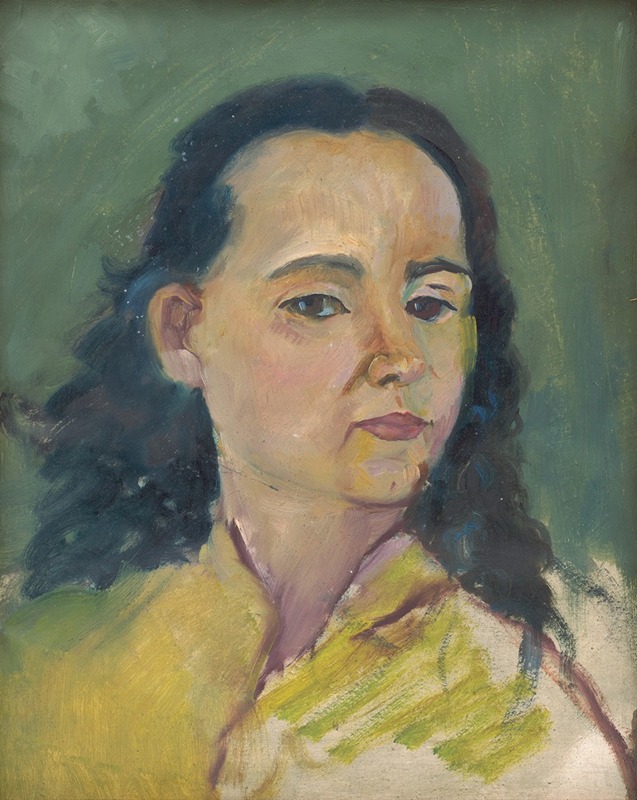
Portait of a Woman
A hand-painted replica of Arnold Peter Weisz-Kubínčan’s masterpiece Portait of a Woman, meticulously crafted by professional artists to capture the true essence of the original. Each piece is created with museum-quality canvas and rare mineral pigments, carefully painted by experienced artists with delicate brushstrokes and rich, layered colors to perfectly recreate the texture of the original artwork. Unlike machine-printed reproductions, this hand-painted version brings the painting to life, infused with the artist’s emotions and skill in every stroke. Whether for personal collection or home decoration, it instantly elevates the artistic atmosphere of any space.
Arnold Peter Weisz-Kubínčan was a Slovak painter known for his contributions to modern art in the early 20th century. His work, "Portrait of a Woman," is one of the pieces that exemplifies his unique style and artistic vision. Weisz-Kubínčan was born in 1898 in Dolný Kubín, which was then part of the Austro-Hungarian Empire, and he later became an influential figure in the Slovak art scene.
"Portrait of a Woman" is a testament to Weisz-Kubínčan's skill in capturing the essence of his subjects through a modernist lens. The painting reflects the influence of various art movements of the time, including Expressionism and Cubism, which were prominent in Europe during the early 20th century. Weisz-Kubínčan's work often explored themes of identity and emotion, and this portrait is no exception.
The painting features a woman whose expression and posture convey a sense of introspection and depth. Weisz-Kubínčan's use of color and form is notable for its boldness and abstraction, yet it retains a sense of realism that allows the viewer to connect with the subject on a personal level. The artist's technique involves the use of strong lines and contrasting colors, which create a dynamic composition that draws the viewer's eye across the canvas.
Weisz-Kubínčan's career was marked by his ability to blend traditional portraiture with modernist elements, making his work stand out in the Slovak art community. His paintings often reflect the social and cultural changes occurring in Europe during his lifetime, and "Portrait of a Woman" is a reflection of these broader themes. The painting not only captures the likeness of the subject but also delves into the psychological and emotional state of the individual, a characteristic feature of Weisz-Kubínčan's portraits.
Throughout his career, Weisz-Kubínčan faced numerous challenges, including the political upheavals of World War II and the subsequent changes in the European art world. Despite these difficulties, he continued to produce work that was both innovative and deeply personal. His contributions to Slovak art have been recognized posthumously, and his works are held in various collections and exhibitions.
"Portrait of a Woman" remains an important piece within Weisz-Kubínčan's oeuvre, showcasing his ability to convey complex emotions through a modernist approach. The painting is a reflection of the artist's commitment to exploring the human condition and his skill in using art as a means of expression. Weisz-Kubínčan's legacy continues to influence contemporary Slovak artists, and his work is studied for its unique blend of modernist techniques and traditional themes.
In summary, Arnold Peter Weisz-Kubínčan's "Portrait of a Woman" is a significant work that highlights the artist's innovative approach to portraiture. Through his use of color, form, and composition, Weisz-Kubínčan captures the essence of his subject while also engaging with broader themes of identity and emotion. His work remains an important part of Slovak art history and continues to inspire artists and art enthusiasts alike.


















